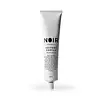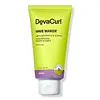What's inside
What's inside
 Key Ingredients
Key Ingredients

 Benefits
Benefits

 Concerns
Concerns

 Ingredients Side-by-side
Ingredients Side-by-side

Water
Skin ConditioningPropylene Glycol
HumectantVp/Va Copolymer
Cera Microcristallina
Emulsion StabilisingCetearyl Alcohol
EmollientOctyldodecyl Myristate
EmollientPetrolatum
EmollientCeteareth-20
CleansingPropoxytetramethyl Piperidinyl Dimethicone
Cottonseed Oil Glycereth-8 Esters
CleansingHydrolyzed Wheat Protein
Skin ConditioningVitis Vinifera Seed Extract
AntimicrobialAloe Barbadensis Leaf Extract
EmollientGlycerin
HumectantAcrylates/C10-30 Alkyl Acrylate Crosspolymer
Emulsion StabilisingTrideceth-6
EmulsifyingPEG-45m
HumectantAlcohol
AntimicrobialPhenoxyethanol
PreservativeTocopherol
AntioxidantParfum
MaskingAminomethyl Propanol
BufferingLeuconostoc/Radish Root Ferment Filtrate
AntimicrobialPEG-40 Hydrogenated Castor Oil
EmulsifyingEthylhexylglycerin
Skin ConditioningLimonene
PerfumingLinalool
PerfumingCitronellol
PerfumingAlpha-Isomethyl Ionone
PerfumingHexyl Cinnamal
PerfumingGeraniol
PerfumingWater, Propylene Glycol, Vp/Va Copolymer, Cera Microcristallina, Cetearyl Alcohol, Octyldodecyl Myristate, Petrolatum, Ceteareth-20, Propoxytetramethyl Piperidinyl Dimethicone, Cottonseed Oil Glycereth-8 Esters, Hydrolyzed Wheat Protein, Vitis Vinifera Seed Extract, Aloe Barbadensis Leaf Extract, Glycerin, Acrylates/C10-30 Alkyl Acrylate Crosspolymer, Trideceth-6, PEG-45m, Alcohol, Phenoxyethanol, Tocopherol, Parfum, Aminomethyl Propanol, Leuconostoc/Radish Root Ferment Filtrate, PEG-40 Hydrogenated Castor Oil, Ethylhexylglycerin, Limonene, Linalool, Citronellol, Alpha-Isomethyl Ionone, Hexyl Cinnamal, Geraniol
Water
Skin ConditioningCetearyl Alcohol
EmollientPropylene Glycol
HumectantIsopropyl Palmitate
EmollientTriethyl Citrate
MaskingVp/Va Copolymer
Ceteareth-20
CleansingHydrogenated Vegetable Oil
EmollientPhenoxyethanol
PreservativeAminomethyl Propanol
BufferingBHT
AntioxidantCaprylic Acid
CleansingCaprylyl Glycol
EmollientEthylhexylglycerin
Skin ConditioningLauryl Laurate
Skin ConditioningLinum Usitatissimum Seed Extract
PerfumingMethylheptyl Isostearate
Skin ConditioningPEG-45m
HumectantPolyacrylate Crosspolymer-6
Emulsion StabilisingPolyimide-1
Polyquaternium-55
Salvia Hispanica Seed Extract
EmollientSilica
AbrasiveSodium Polyacrylate Starch
AbsorbentT-Butyl Alcohol
PerfumingTocopherol
AntioxidantXylitol
HumectantParfum
MaskingBenzyl Alcohol
PerfumingCitral
PerfumingCitronellol
PerfumingHydroxycitronellal
PerfumingLimonene
PerfumingLinalool
PerfumingWater, Cetearyl Alcohol, Propylene Glycol, Isopropyl Palmitate, Triethyl Citrate, Vp/Va Copolymer, Ceteareth-20, Hydrogenated Vegetable Oil, Phenoxyethanol, Aminomethyl Propanol, BHT, Caprylic Acid, Caprylyl Glycol, Ethylhexylglycerin, Lauryl Laurate, Linum Usitatissimum Seed Extract, Methylheptyl Isostearate, PEG-45m, Polyacrylate Crosspolymer-6, Polyimide-1, Polyquaternium-55, Salvia Hispanica Seed Extract, Silica, Sodium Polyacrylate Starch, T-Butyl Alcohol, Tocopherol, Xylitol, Parfum, Benzyl Alcohol, Citral, Citronellol, Hydroxycitronellal, Limonene, Linalool
Ingredients Explained
These ingredients are found in both products.
Ingredients higher up in an ingredient list are typically present in a larger amount.
Aminomethyl Propanol is used to adjust the pH of products. It is also used as a base to create other organic compounds. Having a balanced pH is important for protecting your skin.
Aminomethyl propanol is safe to use in cosmetics up to 1%. It is soluble in water.
Ceteareth-20 is an emulsifier and cleansing agent. It is derived from cetearyl alcohol, a fatty alcohol.
As an emulsifier, Ceteareth-20 prevents oil and water from separating. It is also a surfactant. Surfactants help gather oil, pollution, and dirt to be washed away.
Cetearyl alcohol is a mixture of two fatty alcohols: cetyl alcohol and stearyl alcohol. It is mainly used as an emulsifier. Emulsifiers help prevent the separation of oils and products. Due to its composition, it can also be used to thicken a product or help create foam.
Cetearyl alcohol is an emollient. Emollients help soothe and hydrate the skin by trapping moisture.
Studies show Cetearyl alcohol is non-toxic and non-irritating. The FDA allows products labeled "alcohol-free" to have fatty alcohols.
This ingredient is usually derived from plant oils such as palm, vegetable, or coconut oils. There is debate on whether this ingredient will cause acne.
Due to the fatty acid base, this ingredient may not be Malassezia folliculitis safe.
Learn more about Cetearyl AlcoholCitronellol is used to add fragrance/parfum to a product. It is often derived from plants such as roses. In fact, it can be found in many essential oils including geranium, lavender, neroli, and more. The scent of Citronellol is often described as "fresh, grassy, and citrus-like".
Since the Citronellol molecule is already unstable, Citronellol becomes irritating on the skin when exposed to air.
Citronellol is a modified terpene. Terpenes are unsaturated hydrocarbons found in plants. They make up the primary part of essential oils.
Citronellol is not able to be absorbed into deeper layers of the skin. It has low permeability,
Citronellol is also a natural insect repellent.
Learn more about CitronellolEthylhexylglycerin (we can't pronounce this either) is commonly used as a preservative and skin softener. It is derived from glyceryl.
You might see Ethylhexylglycerin often paired with other preservatives such as phenoxyethanol. Ethylhexylglycerin has been found to increase the effectiveness of these other preservatives.
Limonene is a fragrance that adds scent and taste to a formulation.
It's found in the peel oil of citrus fruits and other plants such as lavender and eucalyptus. The scent of limonene is generally described as "sweet citrus".
Limonene acts as an antioxidant, meaning it helps neutralize free radicals.
When exposed to air, oxidized limonene may sensitize the skin. Because of this, limonene is often avoided by people with sensitive skin.
The term 'fragrance' is not regulated in many countries. In many cases, it is up to the brand to define this term. For instance, many brands choose to label themselves as "fragrance-free" because they are not using synthetic fragrances. However, their products may still contain ingredients such as essential oils that are considered a fragrance.
Learn more about LimoneneLinalool is a fragrance and helps add scent to products. It's derived from common plants such as cinnamon, mint, citrus, and lavender.
Like Limonene, this ingredient oxidizes when exposed to air. Oxidized linalool can cause allergies and skin sensitivity.
This ingredient has a scent that is floral, spicy tropical, and citrus-like.
Learn more about LinaloolParfum is a catch-all term for an ingredient or more that is used to give a scent to products.
Also called "fragrance", this ingredient can be a blend of hundreds of chemicals or plant oils. This means every product with "fragrance" or "parfum" in the ingredients list is a different mixture.
For instance, Habanolide is a proprietary trade name for a specific aroma chemical. When used as a fragrance ingredient in cosmetics, most aroma chemicals fall under the broad labeling category of “FRAGRANCE” or “PARFUM” according to EU and US regulations.
The term 'parfum' or 'fragrance' is not regulated in many countries. In many cases, it is up to the brand to define this term.
For instance, many brands choose to label themselves as "fragrance-free" because they are not using synthetic fragrances. However, their products may still contain ingredients such as essential oils that are considered a fragrance by INCI standards.
One example is Calendula flower extract. Calendula is an essential oil that still imparts a scent or 'fragrance'.
Depending on the blend, the ingredients in the mixture can cause allergies and sensitivities on the skin. Some ingredients that are known EU allergens include linalool and citronellol.
Parfum can also be used to mask or cover an unpleasant scent.
The bottom line is: not all fragrances/parfum/ingredients are created equally. If you are worried about fragrances, we recommend taking a closer look at an ingredient. And of course, we always recommend speaking with a professional.
Learn more about ParfumWe don't have a description for PEG-45m yet.
Phenoxyethanol is a preservative that has germicide, antimicrobial, and aromatic properties. Studies show that phenoxyethanol can prevent microbial growth. By itself, it has a scent that is similar to that of a rose.
It's often used in formulations along with Caprylyl Glycol to preserve the shelf life of products.
Propylene Glycol is an odorless, colorless liquid. As a humectant, it helps skin retain moisture. It also aids in delivering active ingredients.
Another role of this ingredient is preventing a product from melting or freezing. Propylene glycol also adds antimicrobrial properties to a product, elongating product lifespan.
This ingredient is considered an organic alcohol and commonly added into both cosmetics and foods.
Those with sensitive skin or conditions may develop a rash when using this ingredient.
Learn more about Propylene GlycolTocopherol (also known as Vitamin E) is a common antioxidant used to help protect the skin from free-radicals and strengthen the skin barrier. It's also fat soluble - this means our skin is great at absorbing it.
Vitamin E also helps keep your natural skin lipids healthy. Your lipid skin barrier naturally consists of lipids, ceramides, and fatty acids. Vitamin E offers extra protection for your skin’s lipid barrier, keeping your skin healthy and nourished.
Another benefit is a bit of UV protection. Vitamin E helps reduce the damage caused by UVB rays. (It should not replace your sunscreen). Combining it with Vitamin C can decrease sunburned cells and hyperpigmentation after UV exposure.
You might have noticed Vitamin E + C often paired together. This is because it is great at stabilizing Vitamin C. Using the two together helps increase the effectiveness of both ingredients.
There are often claims that Vitamin E can reduce/prevent scarring, but these claims haven't been confirmed by scientific research.
Learn more about TocopherolWe don't have a description for Vp/Va Copolymer yet.
Water. It's the most common cosmetic ingredient of all. You'll usually see it at the top of ingredient lists, meaning that it makes up the largest part of the product.
So why is it so popular? Water most often acts as a solvent - this means that it helps dissolve other ingredients into the formulation.
You'll also recognize water as that liquid we all need to stay alive. If you see this, drink a glass of water. Stay hydrated!
Learn more about Water